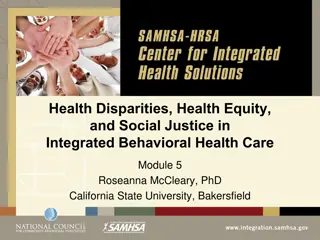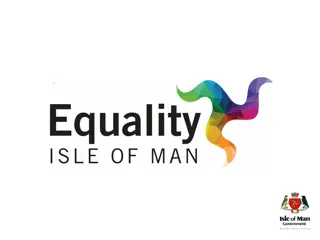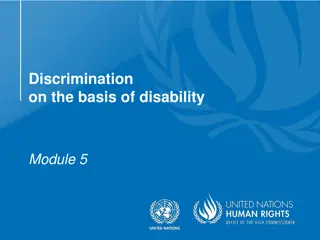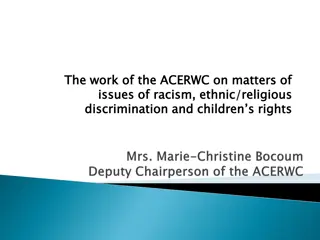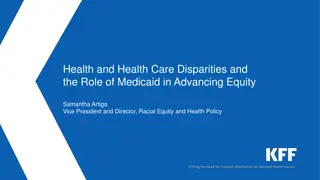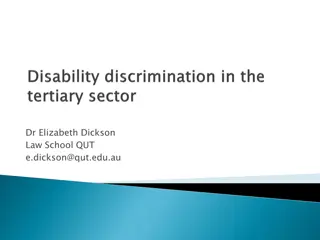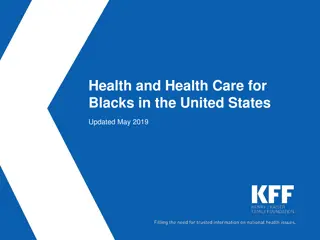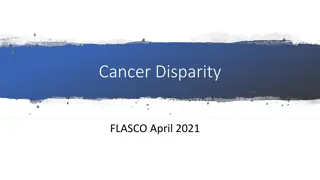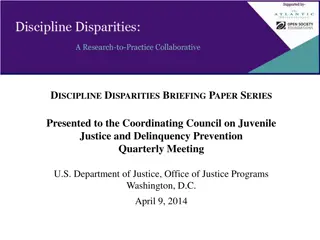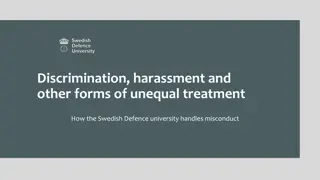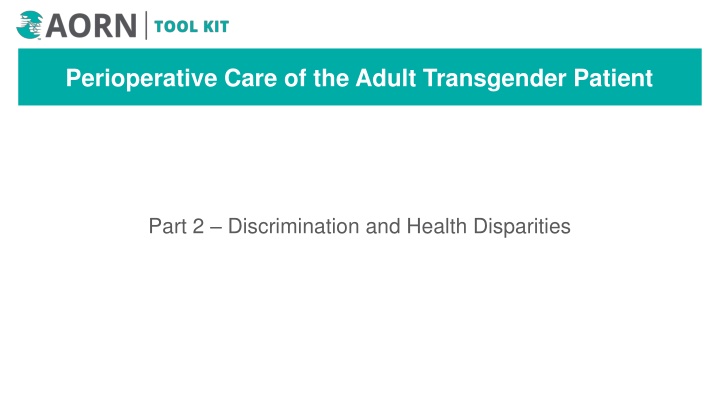
Discrimination and Health Disparities in Transgender Care
Explore the discrimination faced by transgender individuals in healthcare, leading to disparities in access and outcomes. Learn about advocacy efforts to promote inclusivity and overcome barriers to care for the transgender community.
Download Presentation

Please find below an Image/Link to download the presentation.
The content on the website is provided AS IS for your information and personal use only. It may not be sold, licensed, or shared on other websites without obtaining consent from the author. If you encounter any issues during the download, it is possible that the publisher has removed the file from their server.
You are allowed to download the files provided on this website for personal or commercial use, subject to the condition that they are used lawfully. All files are the property of their respective owners.
The content on the website is provided AS IS for your information and personal use only. It may not be sold, licensed, or shared on other websites without obtaining consent from the author.
E N D
Presentation Transcript
Perioperative Care of the Adult Transgender Patient Part 2 Discrimination and Health Disparities
Discrimination 2006 Virginia Transgender Health Initiative Study 2011 National Transgender Discrimination Survey 2012 Project Implicit 2015 Unites States Transgender Survey 2009 When Health Care Isn t Caring Resource Center for Minority Data Lambda Legal and Partner Organizations National Center for Transgender Equality and the National Gay and Lesbian Task Force Harvard University National Center for Transgender Equality Multiyear project to assess health care and social needs 350 self-identified transgender participants 41% reported experiencing discrimination and noted a greater degree of discrimination in health care facilities than in other settings Nationwide survey 4,916 participants 26.7% had been refused health care 15.4% had health care providers refuse to touch them or use excessive precautions during examination 20.9% were talked to with harsh or abusive language 20.3% were blamed for their own health problems 7.8% received physically rough or abusive treatment Nationwide study 6,450 participants 24% weredenied equal treatment 25% experienced verbal harassment/ disrespect 2% experienced a physical attack Determined that the intersectionality of racism, sexism, homophobia, and transphobia in social and medical systems leads to worse health outcomes for marginalized populations Largest survey of transgender- identifying individuals in the United States 22% reported postponing care due to the fear of discrimination
Health Disparities High rates when compared with the heterosexual/cisgender population Reduced access to care Delaying health care due to fear Higher rates of depression, anxiety, and suicide Poorer health outcomes Lack of familial and other social support Higher rates of negative health behaviors Smoking Drinking Drug use Illicit silicone injections Unregulated hormone therapy
Advocacy Discrimination prevents members of the community from accessing health care services Speak up Educate Support trans-inclusive change Recognize your potential for bias Create a safe and welcoming environment Reassure patients privacy Human Rights Campaign Healthcare Equality Index (HEI)
Barriers to Care Refusal to treat Fear of discrimination or negative past experiences with health care Lack of affirming care Lack of adequately trained providers May need to travel to receive appropriate care High medical costs or inadequate insurance coverage Lack of privacy or fear of disclosure Identification documents May not match Changing gender on a medical insurance card may have unintended consequences Examples: denied coverage for prostate cancer or denied a pap smear as part of an annual exam
References for Part 2 Collister D, Saad N, Christie E, Ahmed S. Providing care for transgender persons with kidney disease: a narrative review. Can J Kidney Health Dis. 2021;8:2054358120985379. https://doi.org/10.1177/2054358120985379 Kachen A, Pharr JR. Health care access and utilization by transgender populations: a United States transgender survey study. Transgend Health. 2020;5(3):141-148. https://doi.org/10.1089/trgh.2020.0017 Neira PM, Bowman RC. Improving perioperative nursing care for transgender and gender-diverse patients. AORN J. 2022;116(5):404-415. https://doi.org/10.1002/aorn.13808 Nett D. For trans women, silicone pumping can be a blessing and a curse. NPR: Code Switch. September 1, 2019. Accessed May 8, 2024. https://www.npr.org/sections/codeswitch/2019/09/01/755629721/for-trans- women-silicone-pumping-can-be-a-blessing-and-a-curse Ross KA, Bell GC. A culture-centered approach to improving healthy trans-patient practitioner communication: recommendations for practitioners communicating with trans individuals. Health Communication. 2017;32(6):730-740. https://doi.org/10.1080/10410236.2016.1172286 Tollinche LE, Walters CB, Radix A, et al. The perioperative care of the transgender patient. Anesth Analg. 2018;127(2):359-366. https://doi.org/10.1213/ANE.0000000000003371




